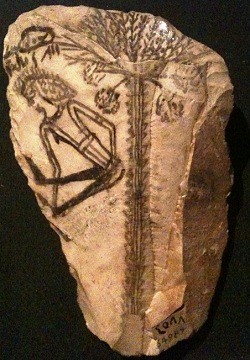"The Bible is an object of bodily sense: of the eyes, if a man reads it, or of the ears if he hears it read aloud. But whatever he understands to be signified by the shapes and sounds of its letters is seen in his soul. He sees his own faith, by which he affirms his belief without hesitation; he sees the thought by which he thinks of all the good his belief can do him; he sees the will by which he steps forward to accept religion; he even sees, fashioned in his mind, a certain image of the Resurrection itself. Without this last, nothing regarded as a bodily event can be understood to have taken place, and even this much may be doubted. But I think you can tell between the way in which he sees his faith and the way in which he sees that image of the Resurrection fashioned in his mind, which even the non-believer sees when he hears the story."
"Although we see some things through the body and others through the mind, it is the mind alone that perceives the distinction between the two. Those things which are seen with the mind are in need of no other bodily sense for us to know they are true. But if the mind does not take in the body's announcements and attend to what is seen through the body, then none of it can be retained as knowledge. Now, those announcements which the mind is said (by a figure of speech) to 'take in' are still left outside; but the mind, without the body's intervention, commits incorporeal likenesses which we call images of physical entities to the memory. From here the mind brings them out of custody, as it can and when it will, in order to pass judgment on them in view of thought. Between these two -- the physical form left outside and the likeness seen within -- a healthy mind can tell the difference, knowing the latter for what is present and the former to be absent. In this way, when I am gone, you think of my physical aspect and it is present to you as an image, but the aspect of which you have the image is not there. One is a body; the other is nothing but the incorporeal image of one."
Letter 147 (to Paulina)/On Seeing God 9, 38
"Although we see some things through the body and others through the mind, it is the mind alone that perceives the distinction between the two. Those things which are seen with the mind are in need of no other bodily sense for us to know they are true. But if the mind does not take in the body's announcements and attend to what is seen through the body, then none of it can be retained as knowledge. Now, those announcements which the mind is said (by a figure of speech) to 'take in' are still left outside; but the mind, without the body's intervention, commits incorporeal likenesses which we call images of physical entities to the memory. From here the mind brings them out of custody, as it can and when it will, in order to pass judgment on them in view of thought. Between these two -- the physical form left outside and the likeness seen within -- a healthy mind can tell the difference, knowing the latter for what is present and the former to be absent. In this way, when I am gone, you think of my physical aspect and it is present to you as an image, but the aspect of which you have the image is not there. One is a body; the other is nothing but the incorporeal image of one."
Letter 147 (to Paulina)/On Seeing God 9, 38





